Turkey
Istanbul
The Blue Mosque
The Blue Mosque, or to provide for it its right name, The Sultan Ahmed Mosque named after the fourteenth Ottoman Sultan Ahmed I who charged its development. Started in 1609 it took seven years to construct and where it was ordinary to pay for such ventures with the crown jewels of war, Ahmed had not pick up any triumphs so needed to pay for it from existing stores. The mosque was based on the site of the Palace of the Byzantine sovereigns which must be crushed. The outline of the Mosque consolidates both Ottoman and Byzantine structural engineering.
The most striking characteristic of the outer surface is the lovely arches that course down from the incredible focal vault. None of the outer surface is blue - the name 'Blue Mosque' hails from the color of the tiles of the inner part. The fundamental vault has a tallness of 43 meters and is 23.5 meters in measurement. An outstanding characteristic of the Blue Mosque is that it has six minarets as it is irregular to have more than four. The fundamental passage is at the West in spite of the fact that vacationers and non-admirers utilize the doorway within the north. An iron chain dangles from the western passageway keeping in mind the end goal to guarantee that the sultan, who was the main individual permitted to enter on horseback, needed to bring down his head each one time he entered.
The inside is lit through more than 250 stained glass windows and various crystal fixtures. The lights inside the mosque were once secured with gold and pearls despite the fact that these have been plundered or evacuated for historical centers. At its lower levels and at each wharf, the inner part of the mosque is lined with more than 20,000 carefully assembled earthenware tiles. The tiles at more level levels are conventional in outline, while at display level their configuration is of blossoms, products of the soil. The floors are secured with floor coverings, which are consistently supplanted because of wear. The most critical component in the mosque is the mihrab, which is made of molded marble. On the right of the mihrab is the minber, or podium, where the Imam stands when conveying his sermon. The outline of the mosque guarantees that everybody in the mosque can see and hear the Imam. before the mosque are the internment structures and tombs of Ahmed I and parts of his crew.
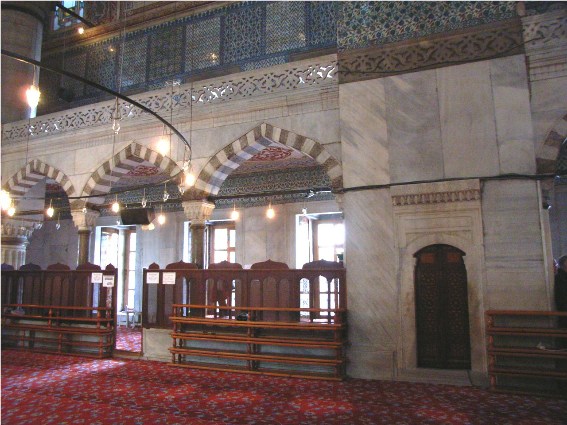
Hagia Sophia
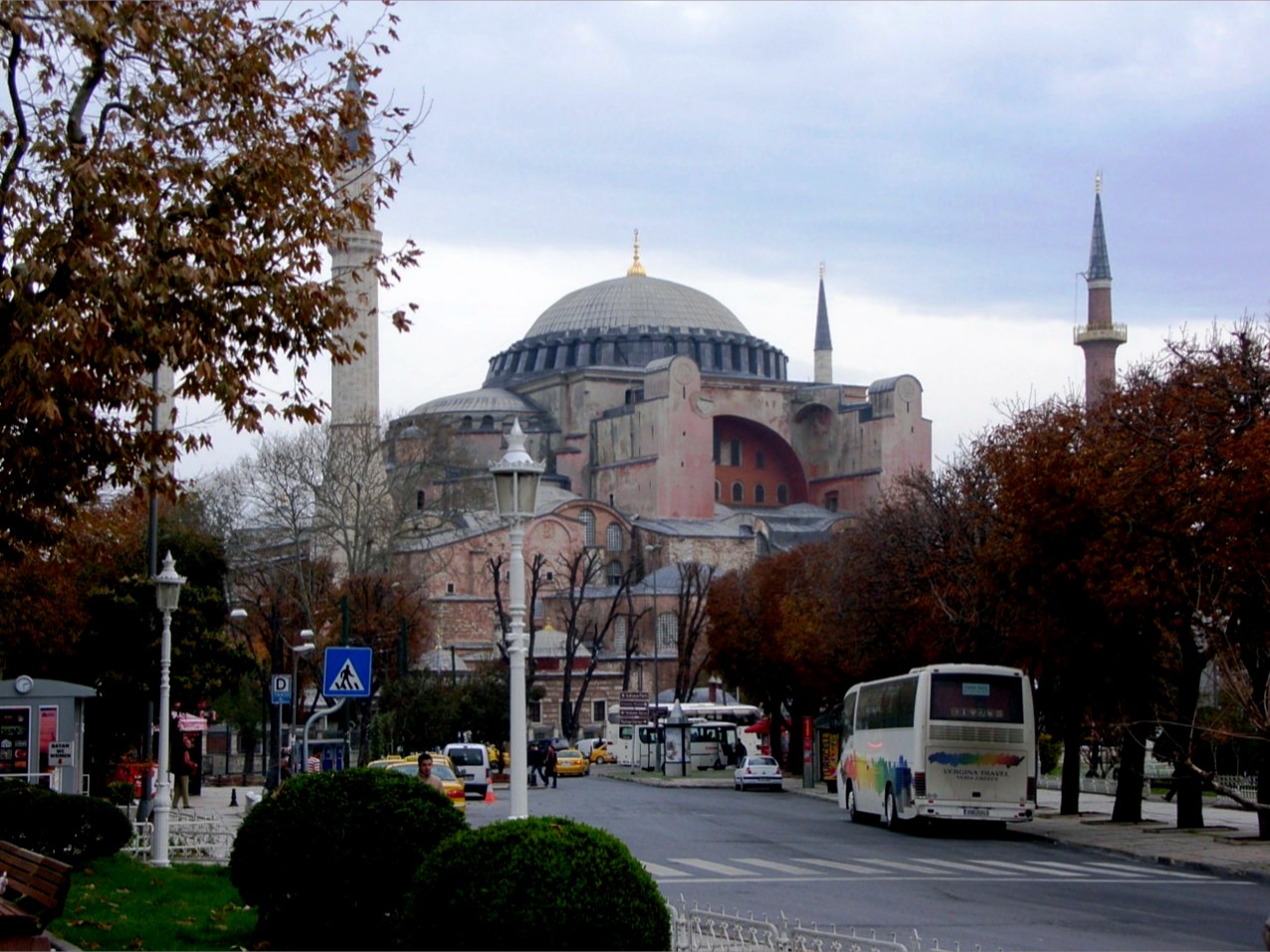
One of the fundamental vacation destinations in Istanbul, the Hagia Sophia known as Ayasofya in Turkish, is likewise alluded to as the Church of St Sophia. It is the third expanding on the site which began as a congregation. At first based on the requests of the Byzantine Emperor Constantine II in 360 AD it was obliterated in 404 AD by a crowd and was revamped to more amazing extents by Theodosius II in 405 AD just to decimated again in 532 throughout the week of mobs known as the 'Nika Revolt', something which brought about very nearly a large portion of Istanbul being burnt to the ground. Rebuilt under Emperor Justinian who was to build a bigger and more magnificent building than its ancestors, which brought about him dispatching marble segments to Constantinople for the undertaking from Baalbek in the Lebanon, when finished it was to remain one of the premier temples notwithstanding being harmed by an arrangement of tremors in 553, 557 and again in 558. The recent of which brought about the breakdown of the principle vault because of it being so even there is no option transmit the stacking down through the docks. The new arch was to get by until an obliterating seismic tremor in 989 AD brought in general building to disintegrate, despite the fact that it was remade to its previous greatness.
In 1453, Constantinople was prevailed over by the Ottoman Turks under Sultan Mehmed II, who requested the Hagia Sophia changed over from a congregation into a mosque. This brought about the evacuation of the change, its chimes and iconostasis and the putting over of the Christian mosaics, which were supplanted with geometrical outlines. The Ottomans made far reaching utilization of unreasonable hued stones, cut wood, gold, mother of pearl and valuable stones in this transformation. The "mihrab" (crescent corner in the divider of a mosque that shows the heading of Mecca) (this was spotted in the apse where the sacred place used to stand); "minbar" (platform in the mosque where the imam stands to convey sermons); and the four "minarets" outside were accordingly included throughout the time of Ottoman principle. It was to remain an Islamic mosque work 1935, when it was converted into a gallery.
Leftovers of the past holy places could be seen found inside the grounds; these incorporate the marble obstructs from the second church. One demonstrating 12 sheep, which speak to the 12 witnesses, these were initially some piece of a front passage and might be seen adjoining the storehouse's door. Likewise to be seen outside is the wellspring for custom ablutions. These are found outside all mosques for the reliable to perform their ablutions before entering. The minarets were built over a time of time by diverse Sultans and although three are developed of white limestone the onward was constructed from red block.
On passage, the Imperial Gate was the principle door to the congregation and was held for the sovereign. The Byzantine mosaic above the gateway dates to the late ninth or early tenth century, and delineates Christ and Emperor Leo VI. Spotted above the southwestern passage and dating from 944 is the mosaic of the Virgin Mary sitting on a revealing throne with her feet resting on a platform with the youngster Christ sitting on her lap. To her cleared out side stands Emperor Constantine who is giving her a model of the city while on her right is the Emperor Justinian I offering her a model of the Hagia Sophia.
The Hagia Sophia holds a vault which achieves a tallness of 55.6 meters. It has a width of 31.24 meters and is upheld by an arrangement of 40 angled windows which give light to the building. These are held set up by four curved triangular columns or pendentives (a helpful procedure allowing the putting of a roundabout arch over a square room or a circular vault over a rectangular room) which were secured with marble and mosaics, despite the fact that in later years these required to be strengthened by the utilization of supports. The arch is molded like within an umbrella with ribs running starting from the top to its base which administer the stacking between the windows and down through the columns to the establishments.
It likewise holds numerous segments, the biggest of which are of stone, 20 meters in stature and in abundance of 1.5 meters in breadth; the biggest weighs over 70 tons. The dividers, roofs and sections are secured with inlayed marble and mosaics. A slope prompts the upper exhibitions that disregard the nave. The focal some piece of the Upper Imperial display was, throughout Byzantine standard, held for the Empress and the women of her court and was known as the Loge of the Empress. It was there that the Empress might sit and watch the transactions; the spot where the throne of the Empress stood is stamped by a round, green stone. Different parts of the displays held gathering rooms and in later years a library. It is the displays which hold a percentage of the finest mosaics of the Hagia Sophia incorporating that of Christ in a blue robe flanked by Empress Zoe and Constantine IX which dates from the eleventh Century; Mary with the Child Christ in her arms flanked by Emperor John II and Empress Eirene; and the representation of Judgment day with Christ in the focal point, with the Virgin Mary and John the Baptist on either side. Additionally to be seen are the two vast marble lustration (Purification) urns dating from the Hellenistic period (323 BC to about 146 BC), which were cut from single pieces of marble.
Reclamation work started in and proceeded all around the twentieth century and is still in advancement today. The challenge is to get a harmony between revealing the old mosaics while likewise saving the Islamic work.
The Hagia Sophia is one of the best surviving samples of Byzantine building design and was, until the fruition of the Seville Cathedral in the sixteenth century, the biggest church for 1000 years. For just about 500 years the Hagia Sophia was the vital mosque of Istanbul, and served as a model for some other Ottoman mosques, including the Sultan Ahmed Mosque or Blue Mosque (See article above). It has had a real impact, both structurally and ceremonially, in the Eastern Orthodox.
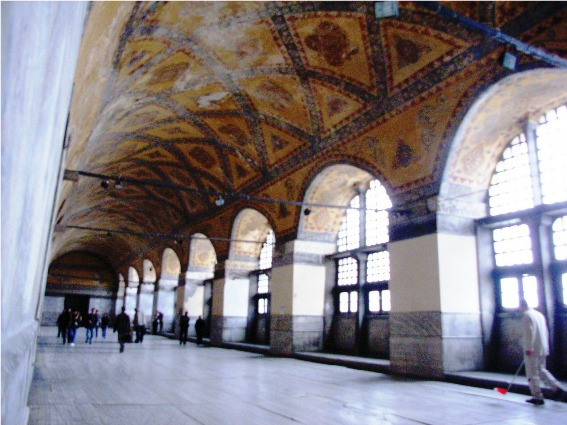
Topkapi Palace
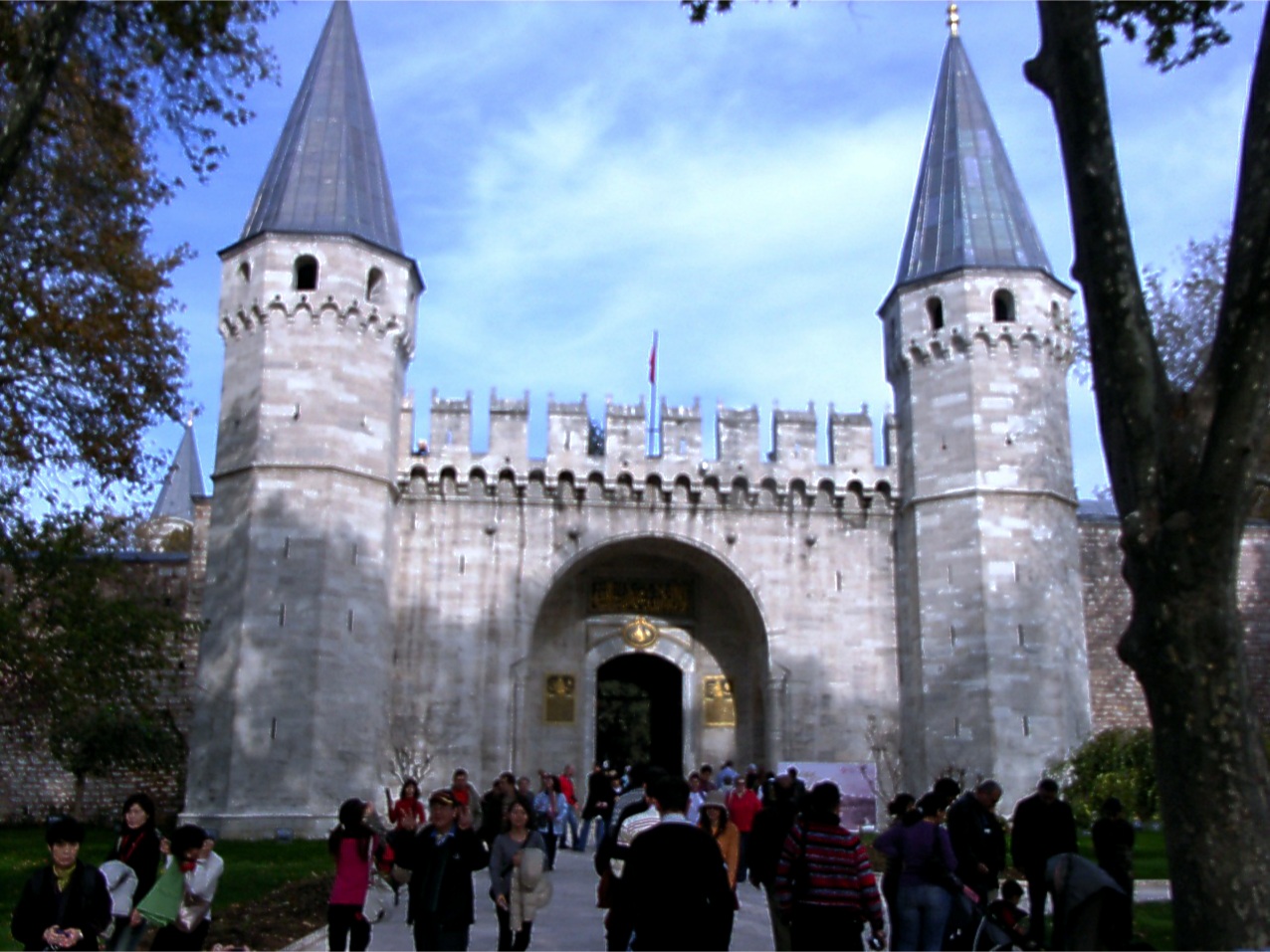
The Topkapi Palace arranged in the heart of Istanbul was the official and essential home of the Sultans of the Ottoman Empire from 1465 to 1856. Development started on the castle in 1459 by the Sultan Mehmed II, who vanquished and caught the Byzantine city of Constantinople in 1453 and renamed the city Istanbul. The Palace was initially known as the New Palace to recognize it from the past home it supplanted as the fundamental habitation. It accepted the name "Topkapý" (Cannon Gate) in the nineteenth century, after the Topkapý Gate and shore structure, despite the fact that these no more exist.
Towards the end of the seventeenth century the Palace lost its imperativeness when the Sultans invested more of an opportunity in the Bosporus and in 1856 Sultan Mecid I moved the court to the recently developed European style Palace in the city. The capacities of the magnificent treasury, the library, mosque and mint were to stay in the Topkapi Palace. 1921 saw the end of the Ottoman Empire and after the nullification of the Caliphate in 1924 the Topkapý Palace was converted into a storehouse devoted to the magnificent period. It holds a gathering of porcelain, robes, weapons, adornments, reinforcement and Islamic calligraphic original copies and wall paintings.
Dissimilar to numerous castles the Topkapi created over a time of four centuries, with consequent sultans making modifications and increments. A lot of improvement happened throughout the rule of Sultan Suleiman (the Magnificent) between the years of 1520 to1560. Suleiman administered a fast development of the Ottoman Empire and needed this to be reflected in his Palace.
In 1574, parts of the royal residence were demolished by flame so a real redesign project was prompted by Sultan Selim II which incorporated the revamping of the kitchens and the extension of the Harem, showers, the Privy Chamber and various the structures along the shoreline. The current presence and configuration dates from the end of the sixteenth century.
The royal residence complex comprises of four primary patios which hold quarters, libraries, schools, mosques, a healing facility, bread kitchens, and a mint and numerous littler structures; in spite of the fact that just a set number are right now open to general society. It comprises of a mixed bag of mostly single story structures encasing the yards, with entryways and windows confronting the yard. These yards are interconnected with exhibitions and entries. Around the Palace are enclosures with trees and wellsprings making it an average spot to live, at its stature, the royal residence was home to upwards of 4,000 individuals and held all the imperatives obliged so that there was no compelling reason to wander out of the complex. The castle even had its own particular water supply given through an arrangement of underground storages.
The patios are masterminded on the south – north pivot getting to be more private as one advancement's to the north. The external one, with more terrific openness, prompting the deepest held for the Sultan and his group of concubines. Every patio was encompassed by high dividers and access was strictly regulated with entryways. In the external yards the regions served for the legislature and political workings of the domain.
The primary passageway into the First Courtyard is through the Imperial Gate which initially dates from 1478, despite the fact that it was secured in marble in the nineteenth century and is embellished by Gilded Ottoman calligraphy with verses from the Qur'an and the tughras (the seal or monogramme of the sultans) of Sultan Mehmed II and Abdül Aziz I, who remodeled the door. On either side are spaces for the watchman and condo were found above the entryway territory until the second 50% of the nineteenth century.
The First Courtyard held various structures which no more exist today. The structures that do remain are the previous Imperial Mint going once again to 1727, the Byzantine church of Hagia Irene utilized as a storage facility and supreme ordnance and various wellsprings. This patio was known as the Parade Court and lead towards the Gate of Salutation.
The Gate of Salutation with its two huge octagonal pointed towers heads into the Second Courtyard. Lavishly enlivened in the upper part with religious engravings and monograms of sultans the door dates at any rate to the 1540's. Hypnotize through the entryway was for authorities and remote dignitaries just. Through the entryway is the Second Courtyard or Divan Square which is encompassed by the previous royal residence healing facility, bread kitchen, stables, the supreme array of mistresses and Divan (committee of state) and the kitchens. The Second Courtyard was the place the sultan might apportion equity and hold groups of onlookers.
The Imperial Council building is the chamber in which the pastors of state and heading authorities of the state, held their gatherings. It is arranged in the northwestern corner of the yard beside the Gate of Felicity which gives the door to the Third Courtyard and a nonstop marble colonnade. The chamber corridor has various doorways from inside the royal residence and from the yard. The patio comprises of various marble columns and has an elaborate green and white wooden roof brightened with gold. The floor is secured in marble.
The castle kitchens with their tall fireplaces comprise of 10 domed edifices and are a conspicuous characteristic of the royal residence. The kitchen comprised of more than 800 staff get ready upwards of 6,000 dinners a day. Today the edifices showing a determination of kitchen utensils, silver blessings and substantial accumulations of Chinese porcelain.
The Third Courtyard - likewise called the Inner Palace - is the private and neighborhoods of the castle. The door has an arch underpinned by marble columns and was developed in the fifteenth century with later work being completed in the eighteenth century. The roof is painted and holds gold-leafed and has a brilliant ball dangling from the focal point. On either side of this colonnaded entry, was the Sultan's Harem and the quarters of the eunuchs and additionally the rooms of the castle school. It likewise held lavish enclosures encompassed by the Hall of the Privy Chamb
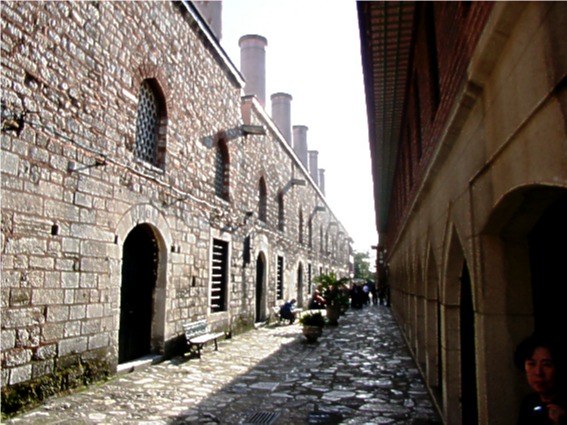
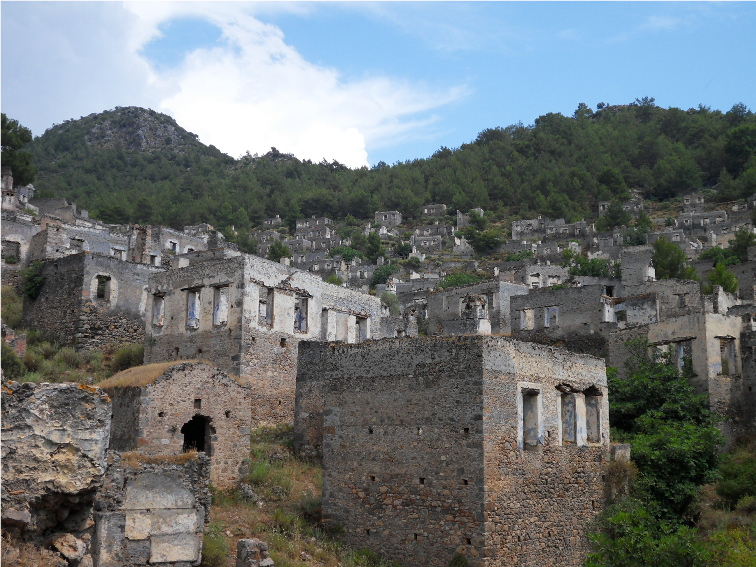
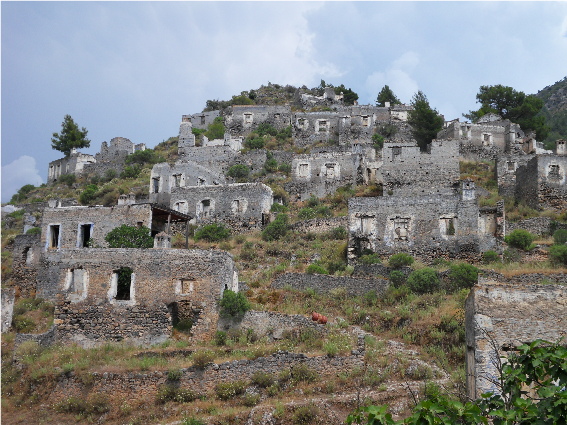
The most striking characteristic of the outer surface is the lovely arches that course down from the incredible focal vault. None of the outer surface is blue - the name 'Blue Mosque' hails from the color of the tiles of the inner part. The fundamental vault has a tallness of 43 meters and is 23.5 meters in measurement. An outstanding characteristic of the Blue Mosque is that it has six minarets as it is irregular to have more than four. The fundamental passage is at the West in spite of the fact that vacationers and non-admirers utilize the doorway within the north. An iron chain dangles from the western passageway keeping in mind the end goal to guarantee that the sultan, who was the main individual permitted to enter on horseback, needed to bring down his head each one time he entered.
The inside is lit through more than 250 stained glass windows and various crystal fixtures. The lights inside the mosque were once secured with gold and pearls despite the fact that these have been plundered or evacuated for historical centers. At its lower levels and at each wharf, the inner part of the mosque is lined with more than 20,000 carefully assembled earthenware tiles. The tiles at more level levels are conventional in outline, while at display level their configuration is of blossoms, products of the soil. The floors are secured with floor coverings, which are consistently supplanted because of wear. The most critical component in the mosque is the mihrab, which is made of molded marble. On the right of the mihrab is the minber, or podium, where the Imam stands when conveying his sermon. The outline of the mosque guarantees that everybody in the mosque can see and hear the Imam. before the mosque are the internment structures and tombs of Ahmed I and parts of his crew.

Hagia Sophia

One of the fundamental vacation destinations in Istanbul, the Hagia Sophia known as Ayasofya in Turkish, is likewise alluded to as the Church of St Sophia. It is the third expanding on the site which began as a congregation. At first based on the requests of the Byzantine Emperor Constantine II in 360 AD it was obliterated in 404 AD by a crowd and was revamped to more amazing extents by Theodosius II in 405 AD just to decimated again in 532 throughout the week of mobs known as the 'Nika Revolt', something which brought about very nearly a large portion of Istanbul being burnt to the ground. Rebuilt under Emperor Justinian who was to build a bigger and more magnificent building than its ancestors, which brought about him dispatching marble segments to Constantinople for the undertaking from Baalbek in the Lebanon, when finished it was to remain one of the premier temples notwithstanding being harmed by an arrangement of tremors in 553, 557 and again in 558. The recent of which brought about the breakdown of the principle vault because of it being so even there is no option transmit the stacking down through the docks. The new arch was to get by until an obliterating seismic tremor in 989 AD brought in general building to disintegrate, despite the fact that it was remade to its previous greatness.
In 1453, Constantinople was prevailed over by the Ottoman Turks under Sultan Mehmed II, who requested the Hagia Sophia changed over from a congregation into a mosque. This brought about the evacuation of the change, its chimes and iconostasis and the putting over of the Christian mosaics, which were supplanted with geometrical outlines. The Ottomans made far reaching utilization of unreasonable hued stones, cut wood, gold, mother of pearl and valuable stones in this transformation. The "mihrab" (crescent corner in the divider of a mosque that shows the heading of Mecca) (this was spotted in the apse where the sacred place used to stand); "minbar" (platform in the mosque where the imam stands to convey sermons); and the four "minarets" outside were accordingly included throughout the time of Ottoman principle. It was to remain an Islamic mosque work 1935, when it was converted into a gallery.
Leftovers of the past holy places could be seen found inside the grounds; these incorporate the marble obstructs from the second church. One demonstrating 12 sheep, which speak to the 12 witnesses, these were initially some piece of a front passage and might be seen adjoining the storehouse's door. Likewise to be seen outside is the wellspring for custom ablutions. These are found outside all mosques for the reliable to perform their ablutions before entering. The minarets were built over a time of time by diverse Sultans and although three are developed of white limestone the onward was constructed from red block.
On passage, the Imperial Gate was the principle door to the congregation and was held for the sovereign. The Byzantine mosaic above the gateway dates to the late ninth or early tenth century, and delineates Christ and Emperor Leo VI. Spotted above the southwestern passage and dating from 944 is the mosaic of the Virgin Mary sitting on a revealing throne with her feet resting on a platform with the youngster Christ sitting on her lap. To her cleared out side stands Emperor Constantine who is giving her a model of the city while on her right is the Emperor Justinian I offering her a model of the Hagia Sophia.
The Hagia Sophia holds a vault which achieves a tallness of 55.6 meters. It has a width of 31.24 meters and is upheld by an arrangement of 40 angled windows which give light to the building. These are held set up by four curved triangular columns or pendentives (a helpful procedure allowing the putting of a roundabout arch over a square room or a circular vault over a rectangular room) which were secured with marble and mosaics, despite the fact that in later years these required to be strengthened by the utilization of supports. The arch is molded like within an umbrella with ribs running starting from the top to its base which administer the stacking between the windows and down through the columns to the establishments.
It likewise holds numerous segments, the biggest of which are of stone, 20 meters in stature and in abundance of 1.5 meters in breadth; the biggest weighs over 70 tons. The dividers, roofs and sections are secured with inlayed marble and mosaics. A slope prompts the upper exhibitions that disregard the nave. The focal some piece of the Upper Imperial display was, throughout Byzantine standard, held for the Empress and the women of her court and was known as the Loge of the Empress. It was there that the Empress might sit and watch the transactions; the spot where the throne of the Empress stood is stamped by a round, green stone. Different parts of the displays held gathering rooms and in later years a library. It is the displays which hold a percentage of the finest mosaics of the Hagia Sophia incorporating that of Christ in a blue robe flanked by Empress Zoe and Constantine IX which dates from the eleventh Century; Mary with the Child Christ in her arms flanked by Emperor John II and Empress Eirene; and the representation of Judgment day with Christ in the focal point, with the Virgin Mary and John the Baptist on either side. Additionally to be seen are the two vast marble lustration (Purification) urns dating from the Hellenistic period (323 BC to about 146 BC), which were cut from single pieces of marble.
Reclamation work started in and proceeded all around the twentieth century and is still in advancement today. The challenge is to get a harmony between revealing the old mosaics while likewise saving the Islamic work.
The Hagia Sophia is one of the best surviving samples of Byzantine building design and was, until the fruition of the Seville Cathedral in the sixteenth century, the biggest church for 1000 years. For just about 500 years the Hagia Sophia was the vital mosque of Istanbul, and served as a model for some other Ottoman mosques, including the Sultan Ahmed Mosque or Blue Mosque (See article above). It has had a real impact, both structurally and ceremonially, in the Eastern Orthodox.

Topkapi Palace

The Topkapi Palace arranged in the heart of Istanbul was the official and essential home of the Sultans of the Ottoman Empire from 1465 to 1856. Development started on the castle in 1459 by the Sultan Mehmed II, who vanquished and caught the Byzantine city of Constantinople in 1453 and renamed the city Istanbul. The Palace was initially known as the New Palace to recognize it from the past home it supplanted as the fundamental habitation. It accepted the name "Topkapý" (Cannon Gate) in the nineteenth century, after the Topkapý Gate and shore structure, despite the fact that these no more exist.
Towards the end of the seventeenth century the Palace lost its imperativeness when the Sultans invested more of an opportunity in the Bosporus and in 1856 Sultan Mecid I moved the court to the recently developed European style Palace in the city. The capacities of the magnificent treasury, the library, mosque and mint were to stay in the Topkapi Palace. 1921 saw the end of the Ottoman Empire and after the nullification of the Caliphate in 1924 the Topkapý Palace was converted into a storehouse devoted to the magnificent period. It holds a gathering of porcelain, robes, weapons, adornments, reinforcement and Islamic calligraphic original copies and wall paintings.
Dissimilar to numerous castles the Topkapi created over a time of four centuries, with consequent sultans making modifications and increments. A lot of improvement happened throughout the rule of Sultan Suleiman (the Magnificent) between the years of 1520 to1560. Suleiman administered a fast development of the Ottoman Empire and needed this to be reflected in his Palace.
In 1574, parts of the royal residence were demolished by flame so a real redesign project was prompted by Sultan Selim II which incorporated the revamping of the kitchens and the extension of the Harem, showers, the Privy Chamber and various the structures along the shoreline. The current presence and configuration dates from the end of the sixteenth century.
The royal residence complex comprises of four primary patios which hold quarters, libraries, schools, mosques, a healing facility, bread kitchens, and a mint and numerous littler structures; in spite of the fact that just a set number are right now open to general society. It comprises of a mixed bag of mostly single story structures encasing the yards, with entryways and windows confronting the yard. These yards are interconnected with exhibitions and entries. Around the Palace are enclosures with trees and wellsprings making it an average spot to live, at its stature, the royal residence was home to upwards of 4,000 individuals and held all the imperatives obliged so that there was no compelling reason to wander out of the complex. The castle even had its own particular water supply given through an arrangement of underground storages.
The patios are masterminded on the south – north pivot getting to be more private as one advancement's to the north. The external one, with more terrific openness, prompting the deepest held for the Sultan and his group of concubines. Every patio was encompassed by high dividers and access was strictly regulated with entryways. In the external yards the regions served for the legislature and political workings of the domain.
The primary passageway into the First Courtyard is through the Imperial Gate which initially dates from 1478, despite the fact that it was secured in marble in the nineteenth century and is embellished by Gilded Ottoman calligraphy with verses from the Qur'an and the tughras (the seal or monogramme of the sultans) of Sultan Mehmed II and Abdül Aziz I, who remodeled the door. On either side are spaces for the watchman and condo were found above the entryway territory until the second 50% of the nineteenth century.
The First Courtyard held various structures which no more exist today. The structures that do remain are the previous Imperial Mint going once again to 1727, the Byzantine church of Hagia Irene utilized as a storage facility and supreme ordnance and various wellsprings. This patio was known as the Parade Court and lead towards the Gate of Salutation.
The Gate of Salutation with its two huge octagonal pointed towers heads into the Second Courtyard. Lavishly enlivened in the upper part with religious engravings and monograms of sultans the door dates at any rate to the 1540's. Hypnotize through the entryway was for authorities and remote dignitaries just. Through the entryway is the Second Courtyard or Divan Square which is encompassed by the previous royal residence healing facility, bread kitchen, stables, the supreme array of mistresses and Divan (committee of state) and the kitchens. The Second Courtyard was the place the sultan might apportion equity and hold groups of onlookers.
The Imperial Council building is the chamber in which the pastors of state and heading authorities of the state, held their gatherings. It is arranged in the northwestern corner of the yard beside the Gate of Felicity which gives the door to the Third Courtyard and a nonstop marble colonnade. The chamber corridor has various doorways from inside the royal residence and from the yard. The patio comprises of various marble columns and has an elaborate green and white wooden roof brightened with gold. The floor is secured in marble.
The castle kitchens with their tall fireplaces comprise of 10 domed edifices and are a conspicuous characteristic of the royal residence. The kitchen comprised of more than 800 staff get ready upwards of 6,000 dinners a day. Today the edifices showing a determination of kitchen utensils, silver blessings and substantial accumulations of Chinese porcelain.
The Third Courtyard - likewise called the Inner Palace - is the private and neighborhoods of the castle. The door has an arch underpinned by marble columns and was developed in the fifteenth century with later work being completed in the eighteenth century. The roof is painted and holds gold-leafed and has a brilliant ball dangling from the focal point. On either side of this colonnaded entry, was the Sultan's Harem and the quarters of the eunuchs and additionally the rooms of the castle school. It likewise held lavish enclosures encompassed by the Hall of the Privy Chamb

Kayaköy

Until 1923, Kayaköy – otherwise called Levissi - was a flourishing town with a populace of a few thousand individuals: Today it is an apparition town with abandoned houses, shops, schools and temples.
Going over to artifact the region was initially occupied in give or take 3,000 BC and was the area of the antiquated city of Carmylessus, which at its tallness had a populace of something like 20,000 individuals: It was to remain an imperative exchanging city until 1100 AD.
Kayaköy was based on the site of Carmylessus in the eighteenth century; with the existing structures being developed in the second some piece of the nineteenth century and first quarter of the twentieth. Kayaköy or Karmylassos, as it was brought in Greek, had been constantly occupied subsequent to in any event the thirteenth century. Truth be told the Turks and Greeks had existed together in the area going once more to in any event the first century BC with the Turks supporting the fields and the Greeks gave the exchanges and experts.
Placed 8 km south of Fethiye in southwest Turkey it was possessed by Greek talking Christians until they were obliged to empty the zone by the populace trade assention marked by the Greek and Turkish governments after the Greco-Turkish War of 1919-1922. This obliged that the actually Greek inhabitants of Kayaköy were to leave their homes and to be taken to Greece where they were re-housed in a town called Nea Levissi (New Levissi), a poor suburb outside of Athens. The Turks who had been brought to Kayaköy from Northern Greece were ranchers and moved down to the fields while others being unaccustomed to the atmosphere and living conditions, moved to different parts of Turkey inside the first year, leaving the spot surrendered.
The site is prominent for being without the typical trappings of tourism with essentially no data sheets or signs and no aides needing to reveal to you adjust and let you know about the spot. Yet the environment is as substantial as any of the more acclaimed spots one can visit in Turkey and knowing the foundation in the matter of why it was abandoned and the grief of individuals needing to leave their home can make an impact on everything except the hardest guest.
The visit begins by scaling the slope along the cobbled lanes with the destroyed stone divider houses. There are about 400 houses in the town every more or less 50 meters square. They are positioned so as not to over shadow one and other and to permit each to have a perspective over the valley. Scattered around the houses, are various churches, a school, a traditions house and two vast places of worship.
At the highest point of the mount is one of the two houses of worship with its roof even now showing the weak framework of frescoes. On the dividers could be seen the stone carvings and captivated sections and the remaining parts of the blue shading that was utilized to embellish them; while the doorway still holds the remaining parts of the mosaics coating the floor.
Over the time of time any timber in the structures has either been uprooted or spoiled away uncovering the building's inner part and the remainders of the shaded dividers, while vegetation has grown from inside the edifices providing for it a left and overlooked feel.
Today Kayaköy is protected by UNESCO as a World Friendship and Peace Village, and exists as an outdoors gallery which could make tourism an inexorably paramount part of the lives of the nearby occupants. Every year huge numbers of the Greek relatives of those casted out in 1923 return for a service of recognition and compromise. It has been inferred that the town will be in part restored to make it all the more a vacation destination so maybe it is some place to visit now before that happens and it gets popularized.


No comments:
Post a Comment